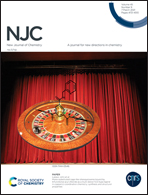In situ construction of one-dimensional porous MnO@C nanorods for electrode materials†
Abstract
Owing to cost-effectiveness, low conversion potential, and high theoretical capacity (756 mA h g−1), MnO has been a potential candidate for LIB anode. Herein, a facile carbon modification route to prepare MnO@C nanorods with excellent capacity and long lifespan for LIB anode is presented, using MnOOH as a precursor after being annealed in Ar/C2H2 atmosphere. Notably, MnO@C displayed a superior capacity of 451 mA h g−1 after 300 cycles at 2 A g−1. The discharge capacity at 5 A g−1 was 261 mA h g−1. We found that the improved performance of MnO@C can contribute to the porous structure and the protection of carbon shell, which are confirmed by kinetic analysis and pseudocapacitance analysis.



 Please wait while we load your content...
Please wait while we load your content...